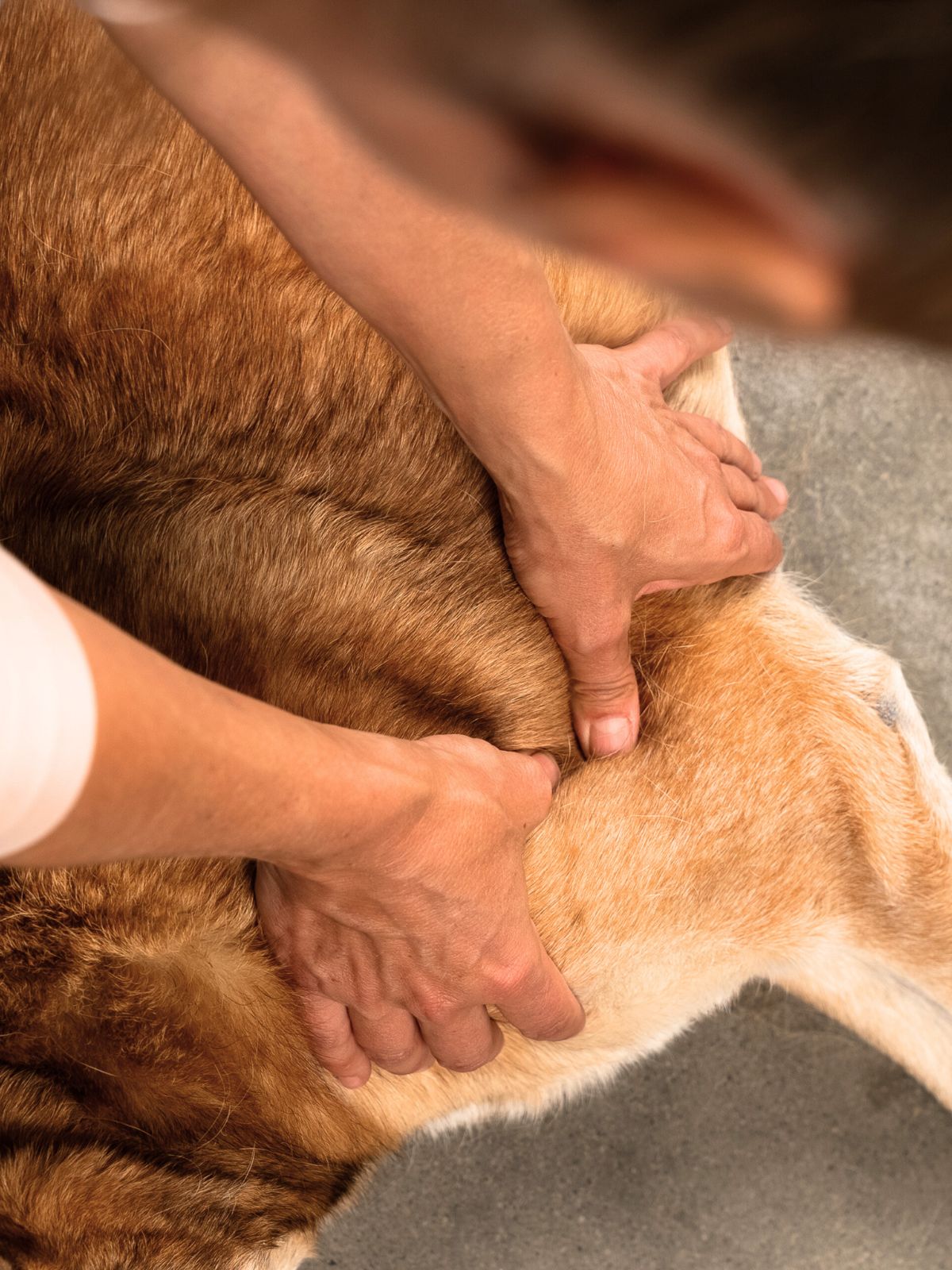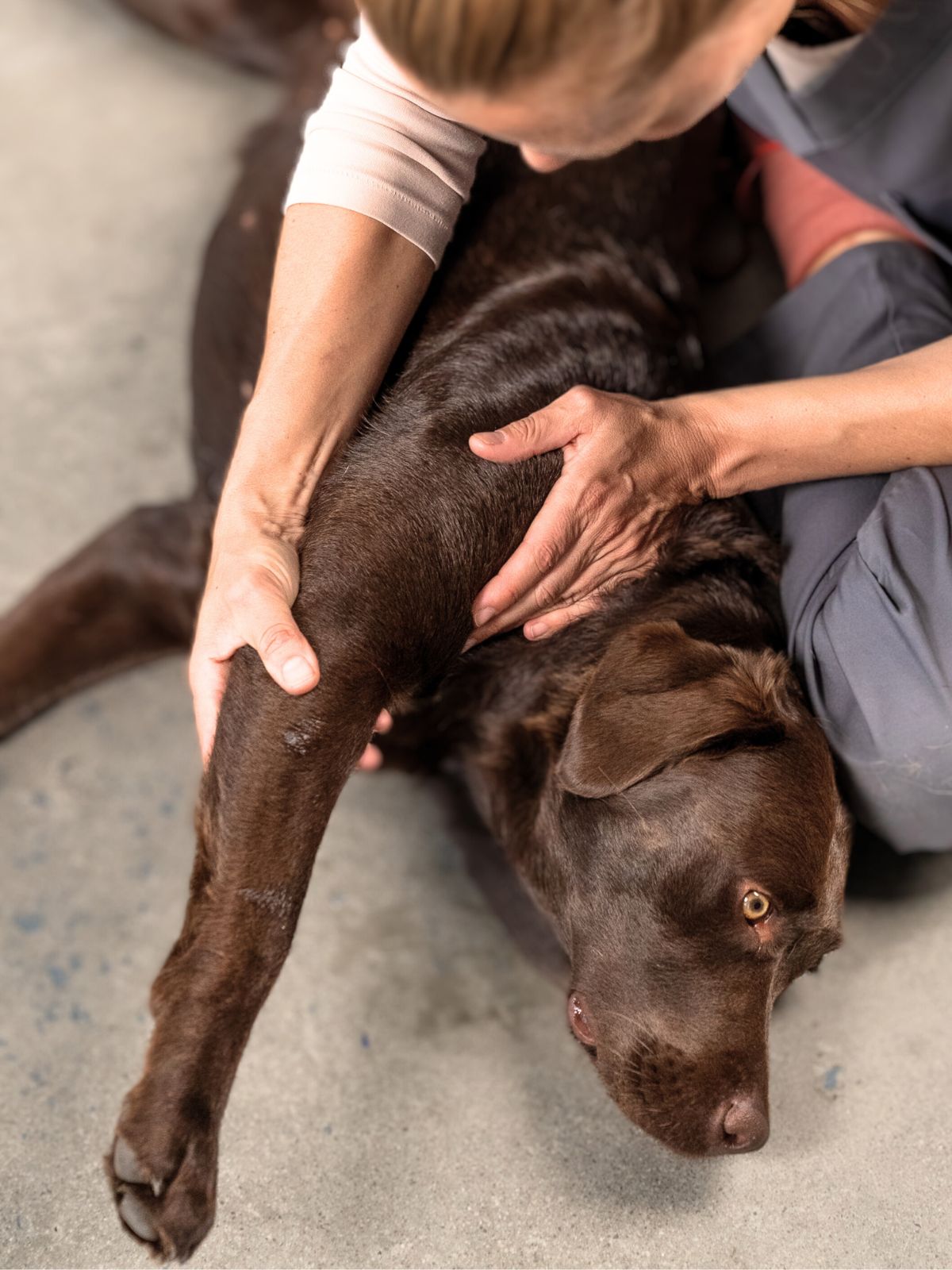Manual Therapy For Dogs
Hands-on treatments to relieve pain, restore mobility and support functional movement
What Is Manual Therapy?
Manual therapy is a core component of canine rehabilitation, using skilled hands-on techniques to evaluate and treat soft tissue and joint dysfunction. At Paws4Paws, we apply manual therapy to address pain, improve movement quality, and support musculoskeletal health—helping dogs feel better, move more freely, and recover more effectively.
Manual therapy is non-invasive, well-tolerated, and tailored to your dog’s clinical presentation. It’s especially beneficial for dogs recovering from surgery or injury, managing chronic pain, or experiencing mobility issues related to ageing or neurological conditions.
Techniques We Use in Manual Therapy
Manual therapy involves skilled, hands-on techniques designed to improve joint mobility, reduce soft tissue restrictions, and relieve pain associated with orthopaedic and neurological conditions. Each technique is selected based on clinical findings, with the goal of optimising biomechanical function, reducing compensatory strain, and facilitating more efficient movement patterns.
Common manual therapy techniques include:
-
Soft tissue mobilisation to manipulate superficial and deep muscular layers, reduce myofascial tension, and restore normal tissue pliability
-
Myofascial release techniques to address fascial densification and restrictions that limit range and contribute to compensatory movement
-
Therapeutic massage to promote local circulation, modulate the autonomic nervous system, and reduce hypertonicity in overused or compensatory muscle groups
-
Joint mobilisation (grade-based) to improve passive joint range, reduce stiffness, and enhance synovial fluid distribution
-
Passive static and dynamic stretching to maintain or restore muscle extensibility and prevent contracture formation in neurologically compromised or post-operative patients
-
Assisted and facilitated range of motion (AROM/PROM) to maintain joint health, support proprioceptive input, and aid in neuromuscular re-education where voluntary movement is impaired
All techniques are applied with consideration of the dog’s comfort, tolerance, and underlying pathology. Manual therapy is often integrated with other modalities such as therapeutic exercise or photobiomodulation to achieve comprehensive functional outcomes.
Ideals for Dogs With
Manual therapy is suitable for a wide range of musculoskeletal and neurological conditions, as well as for dogs recovering from surgery or experiencing age-related changes. It is particularly beneficial for:
-
Orthopaedic conditions such as arthritis, cruciate ligament disease, hip or elbow dysplasia, and luxating patella—where stiffness, pain, and joint restrictions are common.
-
Neurological disorders like intervertebral disc disease (IVDD), Wobbler Syndrome, degenerative myelopathy, and lumbosacral disease—where muscle tone imbalances and postural asymmetries often develop.
-
Post-surgical recovery, including TPLO, patellar stabilisation, spinal surgery, or limb amputation, to reduce soft tissue tension, support joint mobility, and promote healing.
-
Age-related stiffness and mobility decline, which may lead to reduced activity levels, compensatory movement patterns, and chronic discomfort.
-
Soft tissue dysfunction, including myofascial tightness, adhesions, or compensatory muscle overuse from altered gait or poor biomechanics.
-
Generalised discomfort or pain, particularly in dogs with no specific diagnosis but observable signs of mobility limitations, tension, or fatigue.
Manual therapy is also a valuable tool for early intervention and preventative care, helping to address minor changes before they progress into more significant clinical issues.


